
An innovator who fills a vacuum
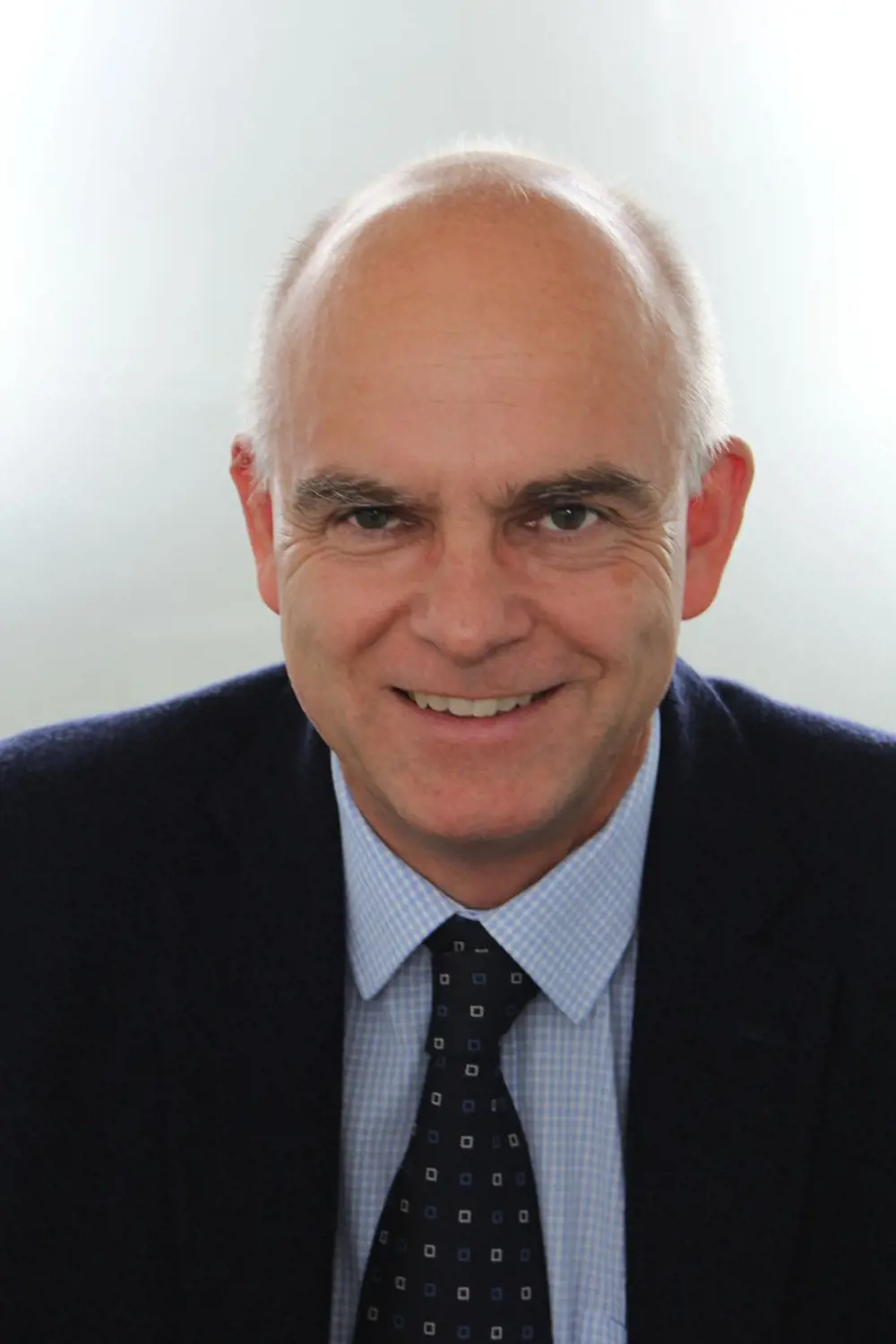
Professor Trevor Cross FREng
For Professor Trevor Cross FREng, Vice President for Innovation, Space and Quantum at Teledyne e2v, a career in engineering began with instructions to turn a research project into a business opportunity. General Electric Co. Ltd’s (GEC) Hirst Laboratory in Wembley had done brilliant research on gallium arsenide (GaAs) solar cells and when it came to exploiting that R&D, Professor Cross’s brief was to ‘take that process and machinery from GEC-Hirst and bring it to the English Electric Valve (EEV) manufacturing site in Chelmsford, a part of GEC’. He then turned the R&D into the ability to make some of the world’s highest-efficiency solar panels for small spacecraft.
Professor Cross had spent time at EEV, in 1978 for a pre-university gap year, before he embarked on an engineering career. Chelmsford was the home of EEV, then a part of GEC Marconi, which was one of the UK’s leading engineering businesses. He returned to EEV in 1985, with a physics degree and a PhD in radiation damage in compound semiconductors. He is still based at Chelmsford, albeit after six different name changes for the business. Now part of the Teledyne family, the Teledyne e2v site remains the city’s last significant manufacturing employer with around 1,000 people. Today, Teledyne e2v specialises in high-tech, low-volume specialist technology, such as space technology and the growing area of quantum technology.
The technology linking Titanic, the 1953 coronation and cancer radiotherapy
Chelmsford was the original home of Marconi – the company built the first ever radio wireless sets – and that spawned what became EEV to make the vital radio ‘valves’; later both became parts of GEC. “Famously,” says Cross, “the first batch of radios included one for the Titanic. If it wasn’t for that radio set, everybody on board would have drowned.” The maritime disaster proved to be Marconi’s saviour. “That incident, although it was absolutely terrible, really launched the Marconi Company. It was heading towards going bust until suddenly everybody said ‘if we’ve got a big ship, we should have one of these new-fangled wireless sets’.”
Over four decades later, it was a very different kind of historic event that catalysed the launch of the business’s vacuum tubes. In 1953, the coronation of HM Queen Elizabeth II created a rush to buy TV cameras to cover the ceremony. The cameras, built around image sensors that were vacuum tubes the size of a person’s arm, were the size of a domestic refrigerator and those tubes alone cost an engineer’s salary for a year! The coronation also led to a booming demand for tubes for TVs to watch the broadcasts.
To this day, vacuum tubes account for more than half of e2v’s profits. Although TVs and cameras no longer need vacuum tubes, microwave ovens often use a vacuum tube device, a magnetron, which produces pulses of microwave energy from pulses of DC electricity. The company also makes a giant version of these devices that power miniaturised linear accelerators generating X-rays for cancer radiotherapy.
EEV still had annual sales of near on £60 million when GEC Marconi closed. There was clearly enough demand for the very mature technology of vacuum tubes, augmented by a family of solid-state technologies and products that had grown from the technical skills needed to make the tubes, to interest investors who might want to back this part of Marconi’s business. The demand continues to this day, thanks to an ageing population, rising standards of healthcare, and wider availability of cancer radiotherapy, especially in China and the east.
In 1953, the coronation of HM Queen Elizabeth II created a rush to buy TV cameras to cover the ceremony. The cameras, built around image sensors that were vacuum tubes the size of a person’s arm, were the size of a domestic refrigerator and those tubes alone cost an engineer’s salary for a year!
Buyouts and takeovers
Professor Cross recalls that, in the bid to rescue EEV, he was brought onto the management buyout team because, as advisers put it, he was “the technical person that the investors would trust”. He became Technology Director when 3i funded the £72 million buyout to found e2v in 2002. Two years later, the company floated on the stock exchange.
As technical lead, Professor Cross managed e2v’s technology through 12 years as an independent business. The company was one of a relatively small community of specialist technology businesses that knew each other well and were circling around each other in search of mergers and takeovers that might deliver business growth. When e2v was looking for takeover candidates, he led the technology ‘due diligence’. It acquired about half a dozen companies before, in 2017, e2v itself became acquisition number 52 for US company Teledyne Technologies. He soon found that Teledyne had taken over some of the businesses that he had explored for e2v.
Professor Cross had enjoyed inspecting the factories for e2v but he wanted to do something new. The Teledyne takeover prompted him to tap deeper into the university links he had established as Technical Director and later Chief Technology Officer (CTO). A lot of academic research, especially in physics, leans heavily on the vacuum technology and electronics that underpin e2v. University researchers delight in pushing equipment to its limits, creating demands that pose challenges and opportunities to suppliers such as e2v, prompting advances that would be useful beyond the academic world.
“When you work in niche markets and high technology, you see some really bright people and some really neat things,” Professor Cross says. For example, he had been involved in satellite technology since his early days at EEV when it commercialised research on GaAs solar cells for solar panels, and joining Teledyne added more space expertise to e2v’s remit. To pick just one example, another part of Teledyne made the infrared sensors for the new James Webb Space Telescope. So Professor Cross had excellent links with a growing network of demanding, leading-edge science customers.
What is quantum gravity and how do we use atoms to measure it?
🎱 It partly involves using laser beams like a snooker cue
For Professor Cross, there is a natural fit between quantum technology and his role as Vice President for Innovation at Teledyne e2v. Quantum technology, a rising area, combines the company’s expertise in vacuum engineering and electronics, core skills that e2v is using to develop new ways to measure time and gravity.
Gravimetry involves detailed measurement of local gravity and how it changes in response to underground features such as buried objects and holes. Conventional gravimetry measures gravity’s effect on a test mass suspended on a spring. Instead, a quantum gravimeter measures the forces on atoms in a vacuum. This is just one application that Professor Cross’s quantum technology team at e2v is pursuing with researchers at the national Quantum Technology Hub at the University of Birmingham.
Quantum gravimetry starts with cold atoms in a vacuum. Professor Cross explains: “We have a little device, a metal tube with a piece of rubidium in it. The tube has a couple of holes or a slit in it. Warm up the tube, pass an electric current through it, and you can put a few million atoms of rubidium into the tube. You can use laser beams like a snooker cue and push these atoms from where you vaporise them into another chamber, where you want to use them.”
Quantum gravimetry can be exceptionally sensitive. “If you’ve got one atom, and you use that as your test mass when you’re trying to measure something, it’s not that you’ve got less error, you have no error.” But you do need cold atoms. “Atoms have this horrible habit of rattling around if they’ve got any energy – that’s what heat is, the movement of the atoms. Take away that energy and you can stop them from moving around too much. That’s what laser cooling does.” Essentially, the sensor drops two clouds of cooled atoms over an area, then measures the differences in gravity that occur as the particles are pulled by their surroundings.
Spring gravimetry peters out with features deeper than about two metres. “If you could go to five metres and measure something the size of a grapefruit, suddenly you’d access nearly all underground services.” That would be a boon for anyone trying to see what’s going on underground. The technology could help detect hidden infrastructure, such as pipelines, and prevent needless digging up of roads and pavements. “Companies have said to me: ‘if you could find a way to arrive at somebody’s kerbside, trundle a little device and it plots out the area to dig where there’s nothing in the way, that’s worth a lot of money to us.
“I can’t do that today. The physics says I should be able to, but the technology is not mature.” It is, however, making good progress, with the Birmingham team and its partners at e2v coming up with promising results. Professor Cross was part of a team that used a quantum gradiometer outside of laboratory conditions for the first time to locate a tunnel buried one metre below the ground surface, with the results published in Nature in February 2022.
Emerging technology
Around the time of the Teledyne takeover, quantum technology (QT) was starting to move beyond the world of academic research, with policymakers beginning to take notice. Governments saw this as an ideal area of research for targeted support, which led to funding for QT across the world. The UK launched the National Quantum Technologies Programme (NQTP) in 2014 with an initial budget of £270 million, which has since risen to more than a billion.
Professor Cross’s university contacts also started sharing enthusiastic accounts of the developing discipline, talking about building on concepts and techniques that were already mainstream for e2v. So, he visited universities across the UK and the National Physical Laboratory (NPL) to find out more. He realised that, while university labs had done a lot of proof-of-principle work on new QT sensors, for example, it would need engineering to make useable products that e2v could sell to its wider audience of high-tech customers.
The company already had expertise in photonics, imaging and high-vacuum technology along with its own fabrication facilities for specialist electronic chips. It had also established channels to market in defence and space markets, traditionally early adopters of new applications.
For e2v the challenge was to make the combination work commercially. The company began to develop ideas for its own entry into QT. “We made a play for cold-atom sensors because we have capabilities in vacuum technology,” Professor Cross explains. Cold atoms are key ingredients in many QT applications. Since then, the company has expanded its work on QT. Professor Cross established a quantum programme of more than 30 people and has an office at the QT Hub at the University of Birmingham – the first of the four national QT hubs – which he helped to shape.
When research funding started to flow into QT, Cross had already become something of an industry enthusiast and leader in the area. When the NQTP was established in 2014, he joined its Strategic Advisory Board. In 2019, e2v hosted the first meeting of the UK’s Quantum Technology Leadership Group. Professor Cross describes this group, which he co-chaired with Professor Graeme Malcolm OBE FREng FRSE of M Squared Lasers, another key player in the QT business, as a ‘pre-trade association’. This was the forerunner to the recently established UKQuantum, an industry-led consortium set up to be the voice of the UK quantum industry.
There may not be a large market for QT devices yet, but the beginnings are there. If nothing else, e2v and other businesses are already building the all-important supply chain to deliver the tools that QT will need. For example, e2v has supplied components for the growing quantum computing business. “We make some of the fastest data converter chips in the world and they’re needed there,” Professor Cross explains. “But it’s not part of what I normally call my quantum technology programme.”
Nearer to the QT mainstream is the development of a quantum gravity sensor at the University of Birmingham [see ‘What is quantum gravity and how do we use atoms to measure it?’] and a quantum miniature atomic clock that e2v is developing with NPL. This £15 million initiative brought together 30 partners from industry and academic research.
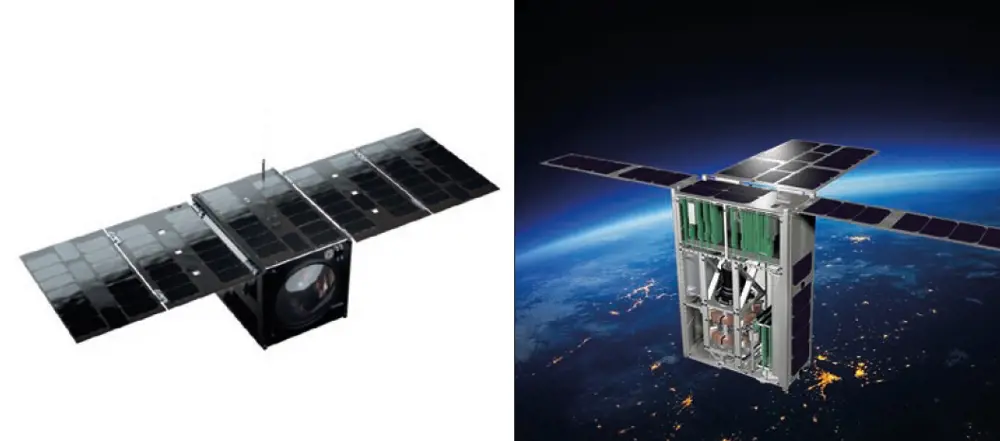
Left: Teledyne e2v’s technology is the heart of the ‘CASPA-ADM’ 12u cubesat (Cold Atom Space Payload – Atmospheric Drag Mission). This will measure tiny variations in atmospheric drag in low Earth orbit, revealing atmospheric density changes useful in climate modelling and orbit decay prediction. It builds on previous miniaturisation and environmental hardening developed in the 6u cubesat CASPA project (right) with partners including the University of Birmingham © image on left courtesy of Clyde Space
Quick Q&A
Praise be to a top teacher, the Swiss Army knife, and a once-ubiquitous $5 camera.
What inspired you to become an engineer?
Without doubt it was watching the Apollo missions.
What are you most proud of?
The team we built for quantum technologies at e2v.
Who influenced your engineering career?
My high school physics teacher – Mr Sharratt.
What’s the best part of your job?
Seeing young engineers getting excited by the future of technology.
Do you have a favourite tool or gadget?
My Swiss Army pen knife, which made it to Annapurna base camp with me.
Which engineering achievement couldn’t you do without?
Microwave oven.
What do you think is an overlooked engineering success?
The 1957 Wurlitzer 2100 Jukebox, which was the first machine to play 200 selections, and the camera in the iPhone 5 – HD, colour and about $5.
Who is the engineer you admire the most?
Henry Ford who said: ‘“Obstacles are those terrible things you see if you take your eye off the goal."
From research to commercialisation
Most engineers might consider Professor Cross’s 30-year track record of guiding technology from research through to commercial products to be the classical definition of innovation, especially in such high-tech applications as space, defence and security. While he grudgingly accepts the label, Professor Cross sees innovation as a “horrible word” with “too many different understandings of what it is”. For him, innovation means taking IP (intellectual property), new ideas and capabilities and turning them into something that adds value as a public good or commercial value.
He insists that there must be a connection between at least part of what academics get up to and the financial benefits of their work. As he said in an interview about earlier threats to science budgets: “I don’t think anyone can have a God-given right or automatic assumption that taxpayers will fund blue-skies research at ever-increasing levels.”
This view carries over into Professor Cross’s take on the government’s enthusiasm for R&D to prime economic growth. He likes the idea but warns that academics should not expect to walk away with all the money. Take the aspiration for the UK to spend 2.4% of its GDP on R&D. “Our academic colleagues may be thinking, ‘Great, everything’s going to rise by, whatever the number is now, up 2.4%. That means loads more money for academic research’.” Hold on, he cautions. “You could say, we’re not really pulling things through into value-adding commercial activity quite as effectively as we are generating brilliant new ideas. We also need to support the commercialisation part of the process.
Career timeline and distinctions
Studied physics with physical electronics, University of Bath, 1982. PhD in radiation damage in compound semiconductors, Lancaster University, 1987. Diploma in management studies, Anglia Polytechnic, 1991. Chair, Electronics, Sensors, Photonics Knowledge Transfer Network, 2009–2014. Group Chief Technology Officer, Teledyne e2v, 2005–2017. Fellow, Royal Academy of Engineering, 2020. Non-Executive Board Member, Compound Semiconductor Applications Catapult, 2017–present day. Vice President, Innovation, Space and Quantum, Teledyne e2v, 2020–present day.
“You could generously increase the amount for research in the university base, but disproportionately put more into the innovation process.” This would be easier when research budgets are rising. Putting more into applied research and commercialisation wouldn’t have to mean taking money out of core research activities. The research share just would not go up as much.
As Professor Cross sees it, the creation and development of new technologies, and using them to create wealth, depends not just on sustaining, but also funding, both bits of the chain. It also needs a healthy innovation culture. He accepts that it will take more than a few successful projects and one company to make a success of QT. As he told the House of Commons Science and Technology Committee when it took evidence on QT: “The industrial players can see ways to solve the technology problems, but unlocking the true value in the economy is not just about the technology. It is about what we encourage people to do with it.”
Contributors
Keep up-to-date with Ingenia for free
SubscribeRelated content
Electricals & electronics
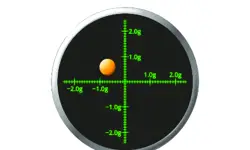
Accelerometers
Used in earthquake measurements, laptops, planes and even in stargazing apps, today’s accelerometers are much smaller than when they were first developed in 1927. Find out how they detect movement and vibration.
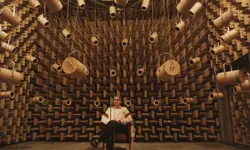
How to maximise loudspeaker quality
Ingenia asked Dr Jack Oclee-Brown, Head of Acoustics at KEF Audio, to outline the considerations that audio engineers need to make when developing high-quality speakers.
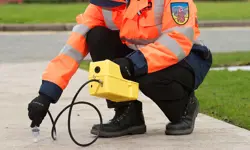
Cable fault locator
The winner of the Institute of Engineering and Technology’s 2014 Innovation Award was EA Technology’s CableSnifferTM, which uses a probe and chemical sensing technology to identify faults, saving energy companies millions of pounds each year.

High speed evolution
In December 2010, Eurostar International Ltd awarded a contract for 10 new high speed trains to Siemens. The company has used a system developed over decades to maximise the performance and passenger-carrying ability of its 320km/h trains.
Other content from Ingenia
Quick read

- Environment & sustainability
- Opinion
A young engineer’s perspective on the good, the bad and the ugly of COP27

- Environment & sustainability
- Issue 95
How do we pay for net zero technologies?
Quick read

- Transport
- Mechanical
- How I got here
Electrifying trains and STEMAZING outreach

- Civil & structural
- Environment & sustainability
- Issue 95